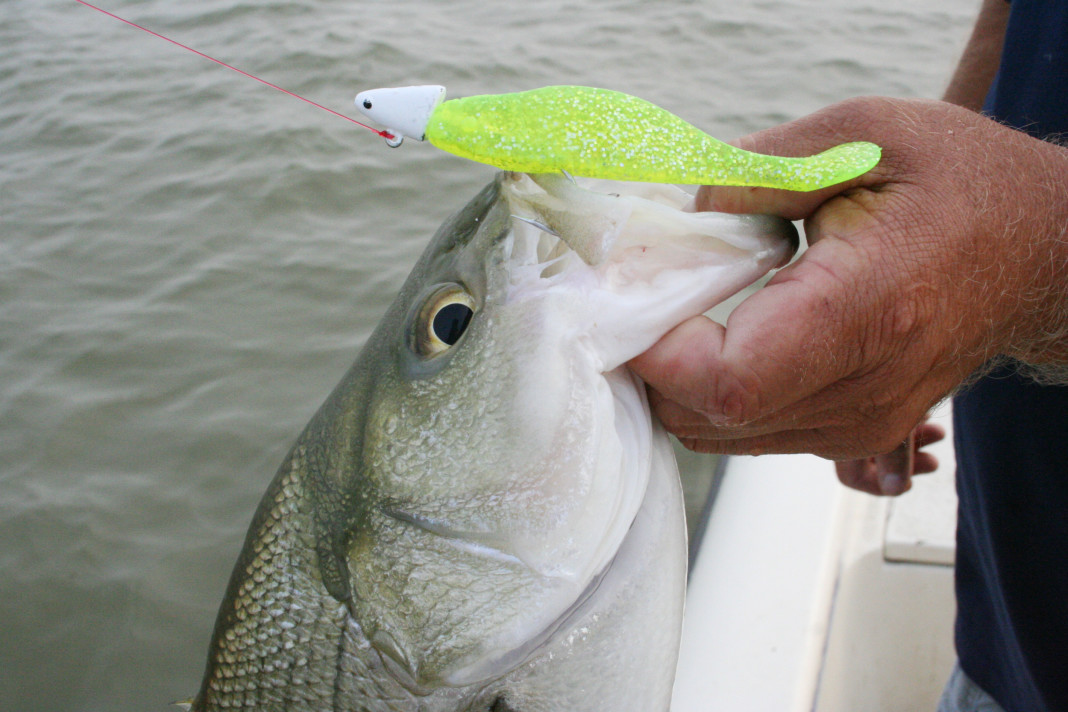Texas’ borders contain more than 150 public freshwater lakes and its Gulf coastline stretches more than 400 miles between a state border with Louisiana and an international one with Mexico. That’s a lot of country that holds plenty of good fishing destinations, no matter your budget or experience level.
With exceptional public opportunities in both freshwater and saltwater, you simply can’t go wrong with trying almost any spot that holds accumulations of the wet stuff. However, there certainly are notable fishing locales that stand out for either quantity or quality, and in some instances, even both.
With that in mind, here’s a breakdown of multiple outstanding fishing opportunities for each month, spread across the state. The list includes everything from largemouth bass and sunfish in freshwater to redfish and offshore species in saltwater. It also includes the usual hot spots and others you may be seeing for the first time.
Let’s go catch some fish!
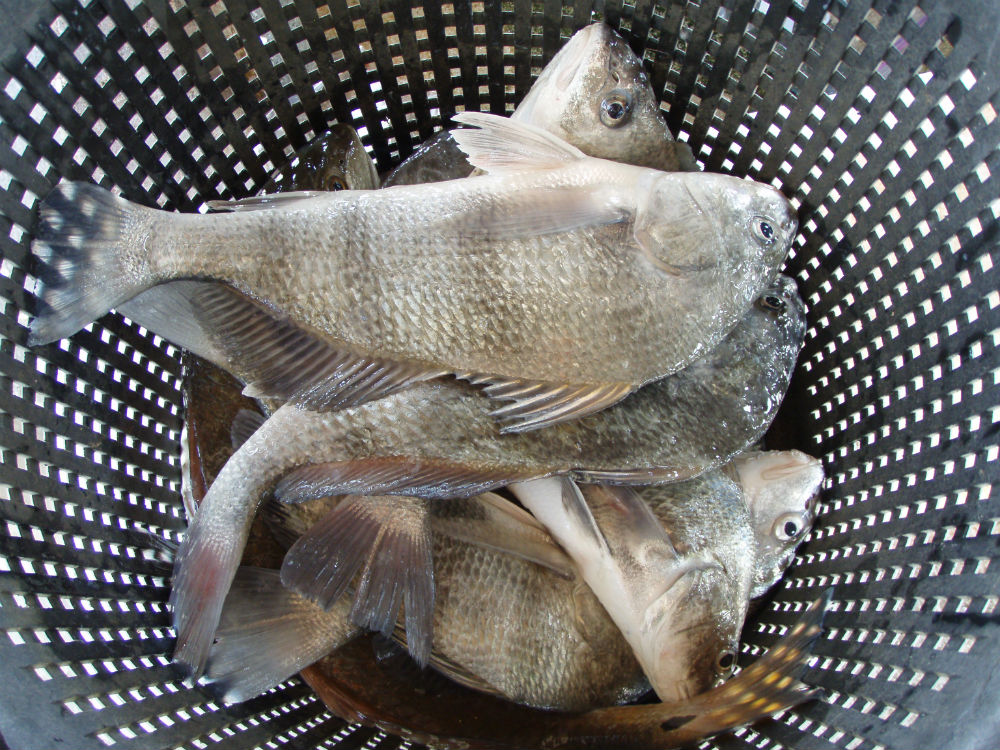
January (Black Drum: Saltwater Jetties, Piers and Passes)
These fish gang up before the spring spawn and it’s not uncommon to see scores of anglers frequenting areas near passes and other manmade flows targeting fish with a variety of natural baits.
Dead shrimp and cracked crabs and cracked mantis shrimp are among the notable lures and cut bait that always produce for anglers looking to take home some great-eating fillets. You also can use Fishbites strips, adding them to cut bait or even putting them alone on a lightweight jig head.
The best surf tactic is to pin the offering to the bottom using heavier weights than most inshore anglers will ever try. Even a “butterfly” drum, one that’s within the slot, can peel drag with the best of the saltwater species, and having heavier tackle can be handy, especially if the bull drum are in.
Anglers may keep five fish per day in a slot limit between 14 and 30 inches. Drum that exceed that limit quickly become less desirable as their flesh gets more coarse and less edible, some even carrying small worms.
Tip: Because of their strength, many anglers utilize a stout leader, which can aid in subduing especially large fish that can top 30 or 40 pounds easily this time of year.
Other January Fishing Options
- Choke Canyon Reservoir Catfish: Target shallow areas (8 feet or less) of flooded terrestrial vegetation with natural and cut bait.
- Amistad International Reservoir Largemouths: Topwaters, buzzbaits and spinner baits work well in early morning and late evening.
(February) Crappie: Toledo Bend Reservoir
This body of water at nearly 200,000 acres is the largest manmade lake in the state, and features big things for boatloads of crappie. The reservoir straddling the Texas-Louisiana border on the Sabine River is among the best places to catch a mess of fish relatively easy as it has an immense variety of fishy cover.
It should be noted that residents of Texas or Louisiana who are properly licensed in their state (or are exempt because of age), or persons who hold valid non-resident fishing licenses issued by either state may fish in any portion of the lakes and rivers forming a common boundary between Louisiana and Texas inland from a line across Sabine Pass between Texas Point and Louisiana Point.
Anglers also should be advised that limits for catfish, white bass and black basses apply on both the Texas and Louisiana portions of the lake.
Tip: Look for papermouths in shallow areas with plenty of vegetation and use lightweight jigs and minnows to fill up a hefty bag limit once you’ve found a school.
Other February Fishing Options
- Lake Livingston White Bass: Target the numerous creeks that run into the lake and you’ll find the sandies.
- Stamford Reservoir Crappie: Find structure such as old trees or rock drop-offs, then vertically fish jigs or minnows.
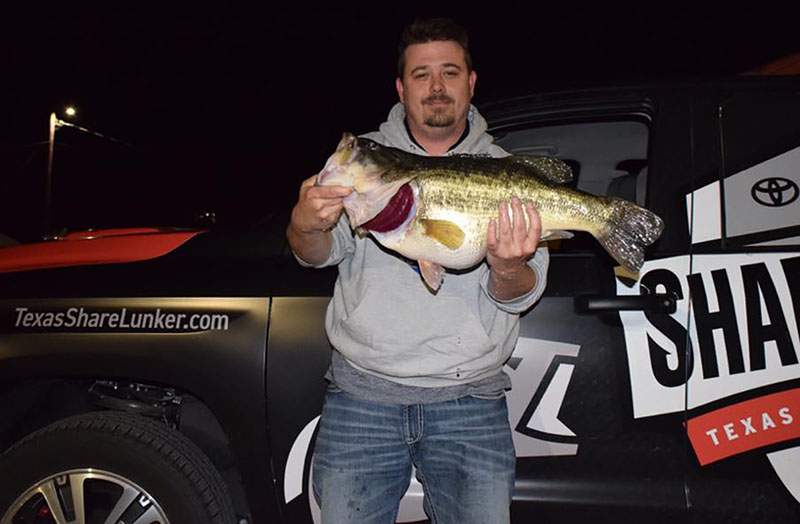
(March) Largemouth Bass: Lake Fork
This body of water is the undisputed king for big-water bucketmouths. In fact, of the 50 biggest largemouths caught in Texas, 34 have come from Fork, including the 18.18-pound state record.
The restrictive slot limit and superb habitat have made Fork the trophy destination for anglers. As temperatures begin to rise, it’s easy to see why. Big sow bass will start to move into the shallows to spawn and are at their most vulnerable for the whole year during time spent lurking near bedding areas cleared off by smaller males.
Among the baits that have been tried and true for catching Fork lunkers are jigs, jerkbaits, spinnerbaits, plastic worms and lizards in a variety of colors. It can be tough to see darker baits, especially on cloudy days, and one tip that seems to work for many veteran anglers is to pick a lighter- or brighter-colored bait that they can see when pitching the shallows in hopes of dragging an offering through a bed.
Tip: Live bait such as minnows is overlooked by many bass anglers, but it’s still among the best ways to find big bass; the state record was caught on a minnow.
Other March Fishing Options
- Lake Ray Roberts Largemouths: Try a Carolina-rigged worm or lizard in shallow water and you’ll find a lunker nearby.
- Lake Somerville White Bass: Target the creeks feeding into the lake with minnow imitations to catch limits of fish.
(April) Largemouth Bass: Sam Rayburn Reservoir
Sam Rayburn has always been a good lake for multiple species, no doubt about it. However, in recent years the body of water has enjoyed an angling Renaissance with hundreds of tournaments held annually on one of the largest lakes in the state.
Sam’s record largemouth was a fish that nearly touched 17 pounds and double-digit fish are regularly brought in by tournament winners during the spring and early summer. The reservoir is one of a handful in Texas that receives annual stockings of fingerlings and fry – the lake has been stocked every year since 1994 – and that has helped to build up its population of Florida strain largemouths and put it among the top 10 bass lakes in the entire country.
The spring 2017 Toyota Bassmaster Texas Fest proved just how great the fishing can be at Sam: the winning angler bringing in a four-day, 20-fish bag just shy of 94 pounds.
Tip: Target inundated vegetation including hydrilla during periods of both high and low water levels and you’ll find hefty largemouths, especially during the spring spawn when the fish move up shallow.
Other April Fishing Options
- Belton Lake Hybrid Stripers: They can be caught bottom fishing with live bait as well as trolling jigs, crankbaits.
- Lake Buchanan Blue Catfish: The eastern portion and area near the dam feature rocky areas that hold big cats.
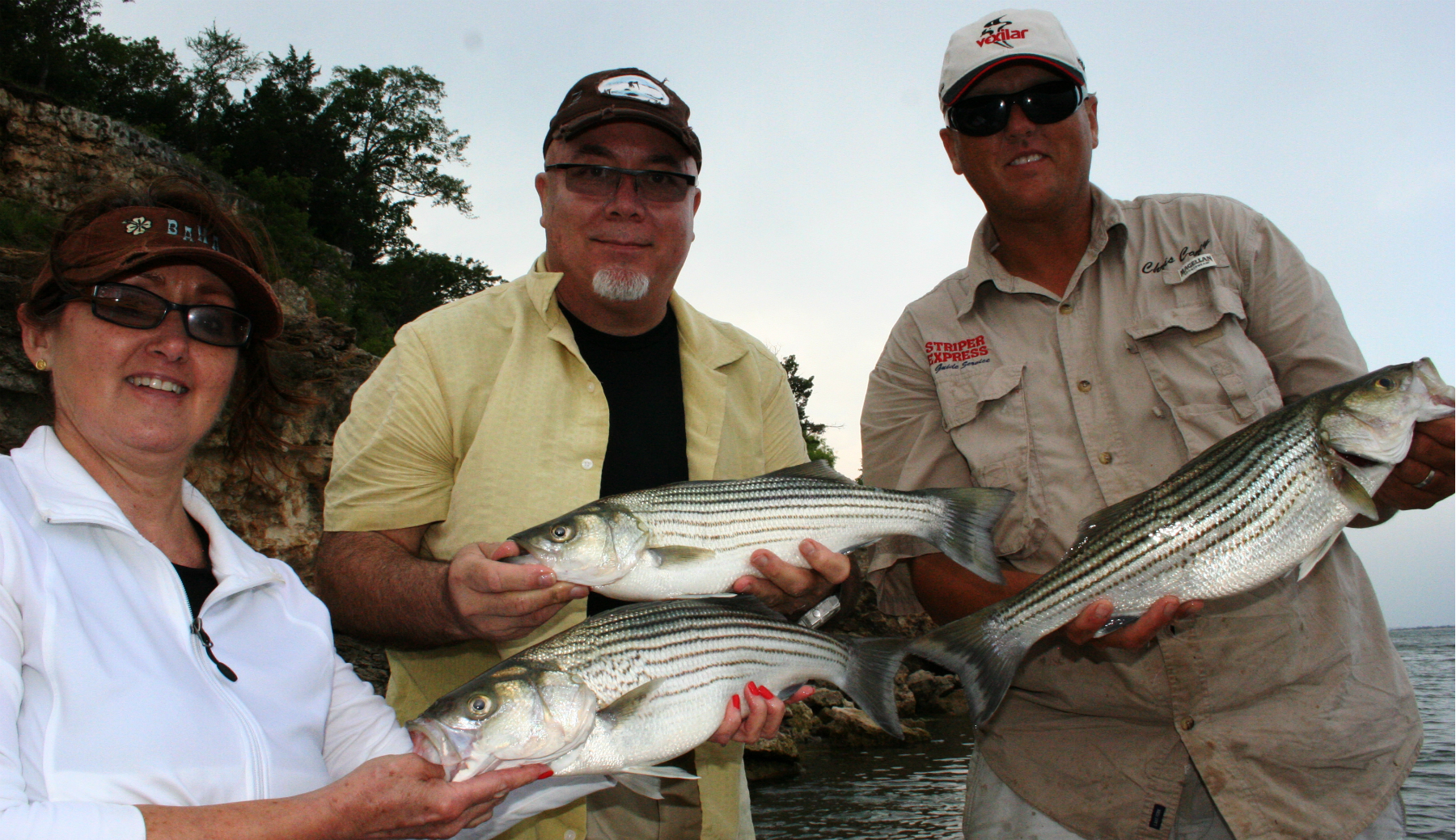
(May) Striped Bass: Lake Texoma
This is the prime lake for striped bass in all of America and the massive body of water on the Texas-Oklahoma border northwest of Denison features a spawning population, the only one in the state. The best aspect of late spring and early summer fishing for Texoma stripers is that they will take a variety of baits.
Anglers trolling crankbaits and other deep-running lures often can be as successful as those chunking live bait, and other lures that have caught untold numbers of fish are slabs and heavy jigs, which can be worked vertically. One spectacular way to catch stripers during cool summer mornings is with topwaters fished near shorelines, which also could produce a hefty smallmouth or largemouth.
Anglers with Texas licenses may fish in the Texas portions of the reservoir, or purchase a Lake Texoma license ($12) to fish the entire lake. It should be noted that two-thirds of the lake is in Oklahoma.
Tip: Heavy jigs, slabs and live gizzard shad all catch fish. After the spring spawn, work shad over flats near the river channel in the main part of the lake.
Other May Fishing Options
- Richland-Chambers Reservoir White Bass: Watch for bird activity near the surface to find schools of sandies below.
- Lake Conroe Largemouths: Target shallow areas near boat docks and marinas with shad imitations to find lunkers.
(June) Red Snapper: Gulf of Mexico
Red snapper fishing has become a contentious issue, with state and federal fisheries officials and recreational and commercial anglers squaring off over quotas and season dates, but one thing remains certain: the fish is among the most-sought species by everyone, and for good reason – it’s among the best-eating fish out there.
The fishing season in federal waters in some years off the Texas coast was limited to less than a week. However, recent seasons have bounced back, as they should, with longer opportunities to catch snapper starting 9 miles out and extending to 200 miles. The 2023 snapper season ran from June and into July and August in federal waters off the Texas coast.
It should be noted that snapper options do exist in state waters. The bag limit in federal waters remains two fish that are at least 16 inches long, while the daily framework in Texas state waters — where fishing is allowed year-round — is four fish which must be at least 15 inches.
Tip: Make sure to plan ahead and target the earliest dates available as federal fisheries officials have the ability to curb the season as they wish; there still are fish to be caught, and snapper makes some of the best table fare around.
Other June Fishing Options
- Gulf of Mexico Dolphin: When the “mahi-mahi” are in, hook up with a guide for a great, safe trip.
- Lake Travis Stripers: Downrigging with bucktail jigs and trailers over submerged humps and deepwater points is effective.
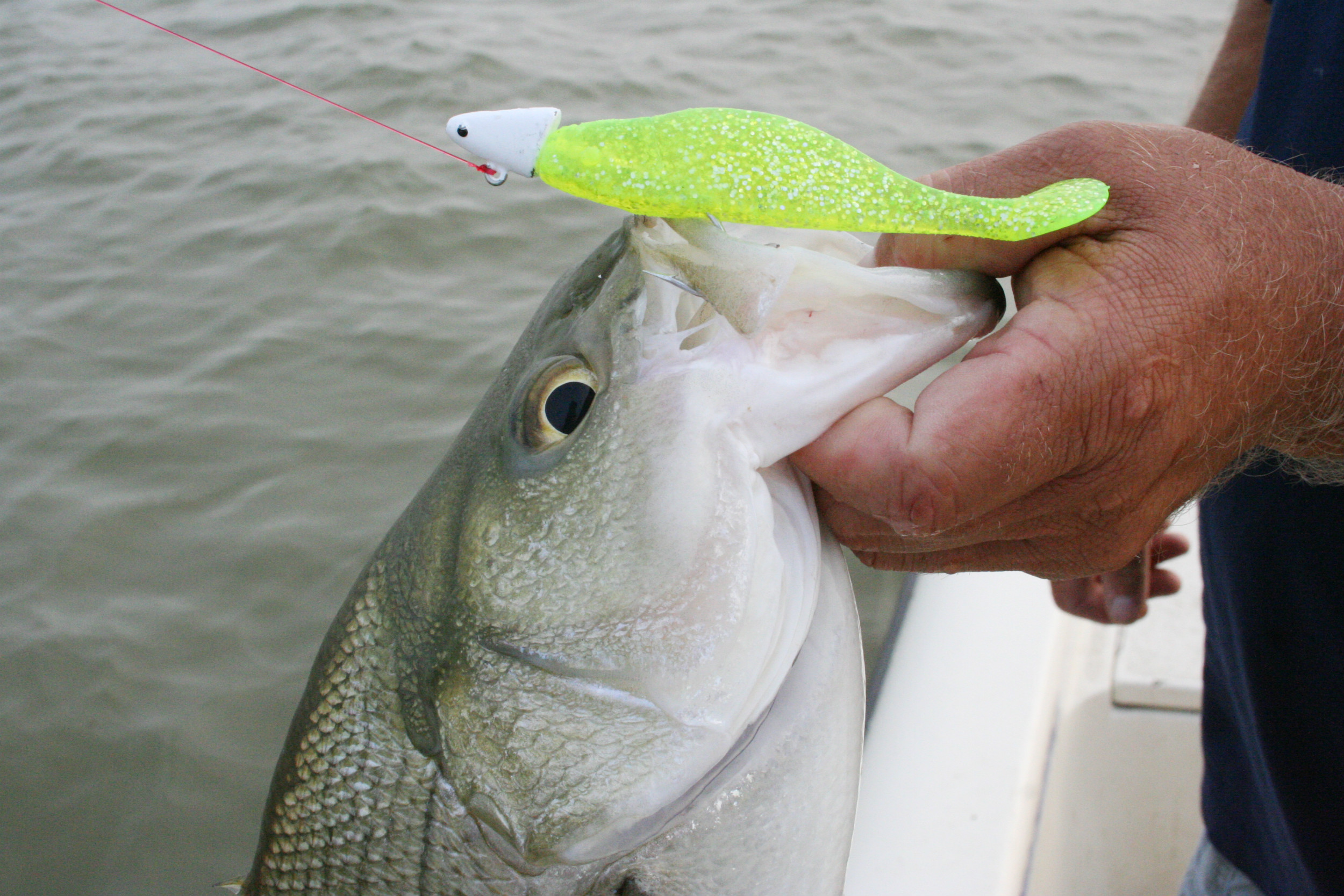
(July) Hybrid Stripers: Cooper Lake
This sleeper lake northeast of the Metroplex remains a hotspot for hybrids, and they can be caught on a variety of lures this month, including topwaters, which can make for exciting action. You also can find hybrids by throwing slabs, crankbaits and other baitfish-type lures.
Many anglers will slow roll baits near the bottom including Sassy Shads and spoons and find success while vertically jigging bucktail offerings and trolling or throwing crankbaits also are excellent ways to find lots of fish. Live bait presentations for both hybrid and white bass are popular at all times of the year, too.
The lake record is more than 11 pounds and when you consider the hybrid, a cross between a striped bass and a white bass, fights harder than either, a fish of that size could be the catch of the year for any angler.
Tip: Target humps and shallow points in the main lake area to find both hybrid stripers and white bass; as temperatures rise focus on deeper points to find more fish.
Other July Fishing Options
- Matagorda Bay Speckled Trout: Live bait, especially croakers, is the ticket to fill a limit regardless of where you’re fishing.
- Lake Lavon Sunfish: Use nightcrawlers dipped from a cane pole for an original fishing experience.
(August) Bass Species: Lady Bird Lake
This 500-acre body of water in downtown Austin gets utilized heavily by the urban crowd but that shouldn’t deter you from trying to catch multiple species of bass during the height of the summer.
Formerly Town Lake, Lady Bird has an excellent population of largemouths. It sports a respectable lake record largemouth of 13.5 pounds. While that fish was caught in December, the body of water also gave up its lake record Guadalupe bass at just over 3 pounds in August. In addition, Lady Bird has smallmouths, stripers, hybrid stripers and white bass, a rare offering in Texas.
Most of the cover on the lake is located along the bank and includes laydown logs and trees, overhanging brush, cypress tree roots, bulrush and cattails. Some submerged aquatic vegetation can be found in the lower end of the lake near the dam. Barton Creek enters on the south side at approximately mid-lake. The water in this spring-fed creek remains warm during the winter.
Tip: Because of clear conditions, this can be an excellent night fishing lake for largemouths. Casting white spinnerbaits and topwaters or pitching jigs with medium to medium-heavy bait casting tackle along the shoreline works well.
Other August Fishing Options
- Lake Tawakoni Channel Catfish: Bait up some holes with sour grain and the fish will be found nearby.
- Nueces Bay Speckled Trout: Try drifting over the reefs using paddletail plastics for hungry specks in the slot.
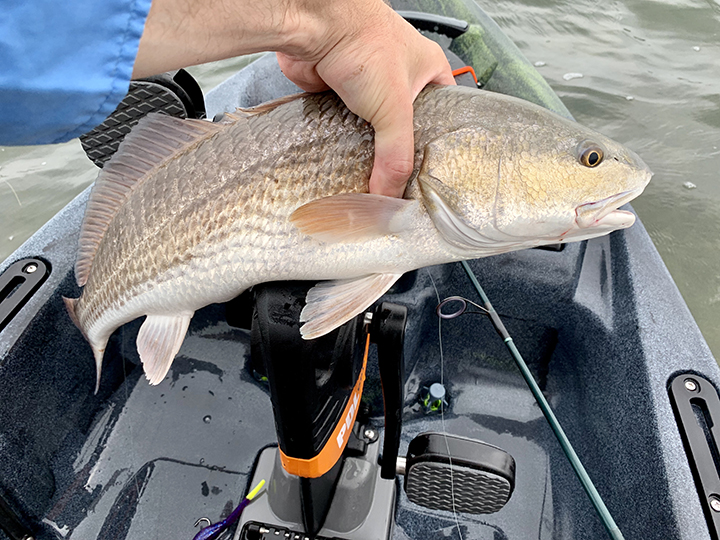
(September) Redfish: Gulf Beaches
The redfish run is among the most amazing sights in saltwater angling, and they are in full force along Gulf beaches through the fall months.
As these fish mature, they move out into the Gulf where they spend most of their lives. That’s a great thing for surf, jetty and pier anglers, and these brawny battlers will take a number of offerings, including cracked crabs, shrimp and bait fish of all sizes. They’ll readily slam live and dead bait, but anglers toting artificial lures should always remember to pack heavy spoons, swim baits and other variations that mimic mullet or croakers. Surf rods that are heavy and stiff are standard tackle for anglers who pitch out multiple baits as far as they can and drop them into a holder punched into the sand.
The daily bag on redfish is three fish in a slot limit of 20 to 28 inches, though you may keep one over 28 as long as it’s affixed with the oversized red drum tag from your saltwater fishing license.
Tip: This is your chance to find bull reds on their annual migration; bring along stout tackle and lure staples such as spoons to catch these fighters.
Other September Fishing Options
- Lake O’ The Pines Catfish: Use prepared baits or cut baits near flooded vegetation and in main lake points.
- Lake Limestone Catfish: Try drifting across main lake flats with cut shad, shrimp, worms, or commercial dough bait.
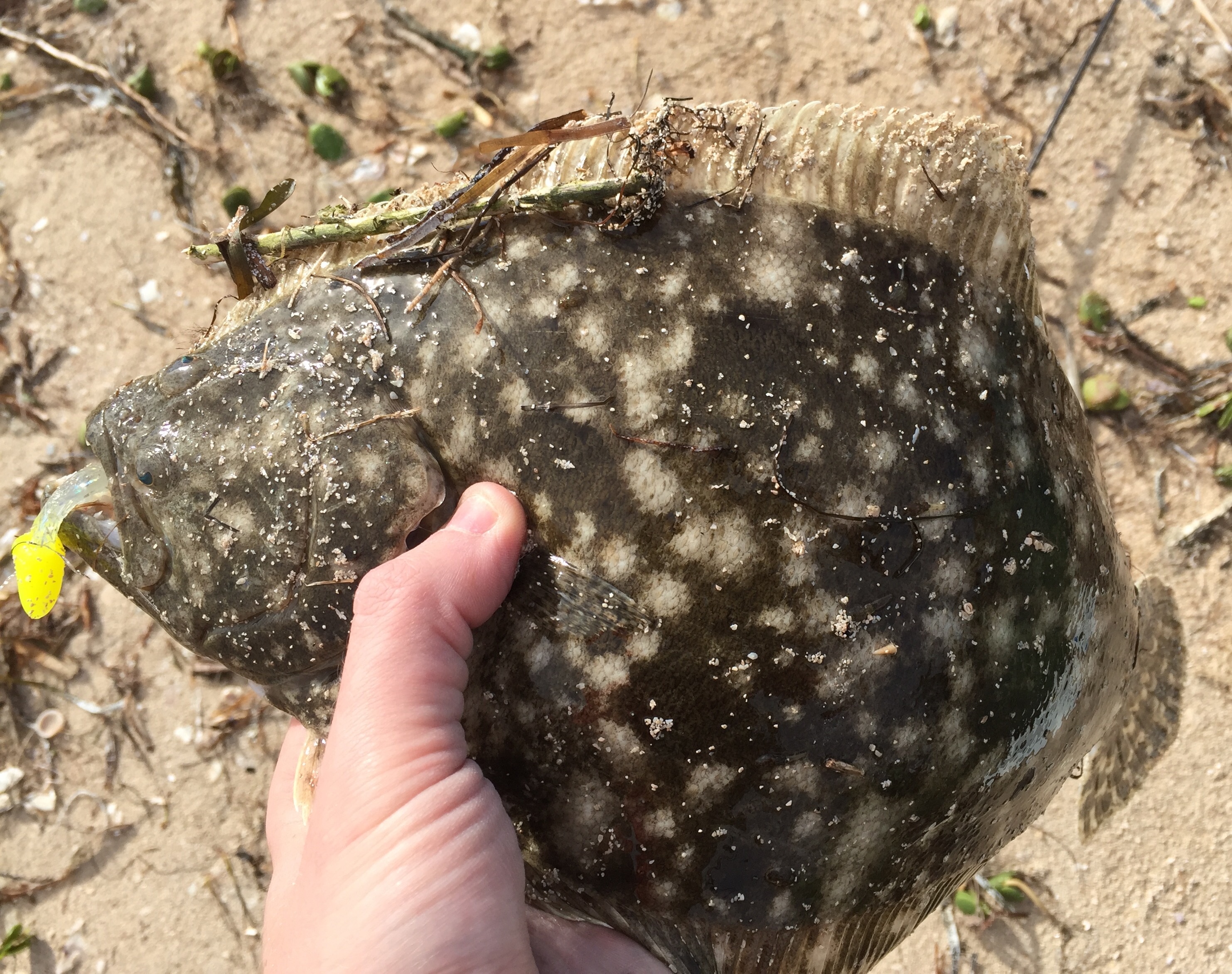
(October) Flounder: Intracoastal Waterway
Flatfish always are a welcome addition to a daily bag limit when you’re wading during the late summer and early fall, but this time of year they’re a common sight in many areas if you know where to look.
As a result of a fall in population estimates, the Texas Parks and Wildlife Department Commission, at the behest of fisheries officials, shut down flounder fishing for both recreational and commercial anglers during the month of November and through Dec. 14. During that timeframe, no flounder may be kept, no matter the means or methods.
During October, and before the overall fishing closure, flounder will skirt along edges where deeper channels meet shallower bars and will take a number of lures, especially of the freshly dead variety. One common approach is to fish jigs and other baits on the bottom tipped with a piece of shrimp.
It’s also not uncommon to find flounder in the shallows on warmer days. Target sandy potholes and sandy drop-offs in the miles of seagrass flats to discover plenty of hungry fish that will readily take a number of artificials, including spoons.
Tip: Look for feeding birds and baitfish activity; flounder won’t be far behind, hoping to catch the remnants of anything that falls to the bottom.
Other October Fishing Options
- Fort Phantom Hill Catfish: Almost any bait works — a 60-pound flathead was caught on a piece of hot dog
- Lake Lewisville Channel Catfish: The 22-pound lake record channel cat was caught on a crankbait.
(November) Pompano: Gulf Coast Beaches
This specimen, also known as cobblerfish, is a common find along Gulf beaches and pass areas. They frequent sandy areas where they pick off sand fleas and other critters that find themselves unlucky enough to be near the bottom. Pompano don’t get large – the average fish is anywhere from 2 to 4 pounds – but the state record is 6.25 pounds and even small ones are superb at the dinner table. There’s also no size or bag limit on pompano.
Live bait will produce when you’ve located a school of hungry pompano, and the fish also will hit small spoons, jigs and mullet-looking artificials.
Beginning south of Corpus Christi on the beaches of the Padre Island National Seashore, there are miles of suitable fishing locales for anglers targeting pompano, and the farther south you head toward South Padre Island the better the fishing typically gets when it’s colder.
Tip: Anglers targeting “pomps” typically use rigs fished near the bottom featuring small hooks baited with bits of shrimp, which are easier for them to take.
Other November Fishing Options
- Lake Bridgeport Smallmouths: During the fall, try crawfish-mimicking baits, spinners, and jigs in turbid and shallow water.
- Lake Whitney Smallmouths: Target the middle and lower portions of the reservoir where rocky habitat is common.
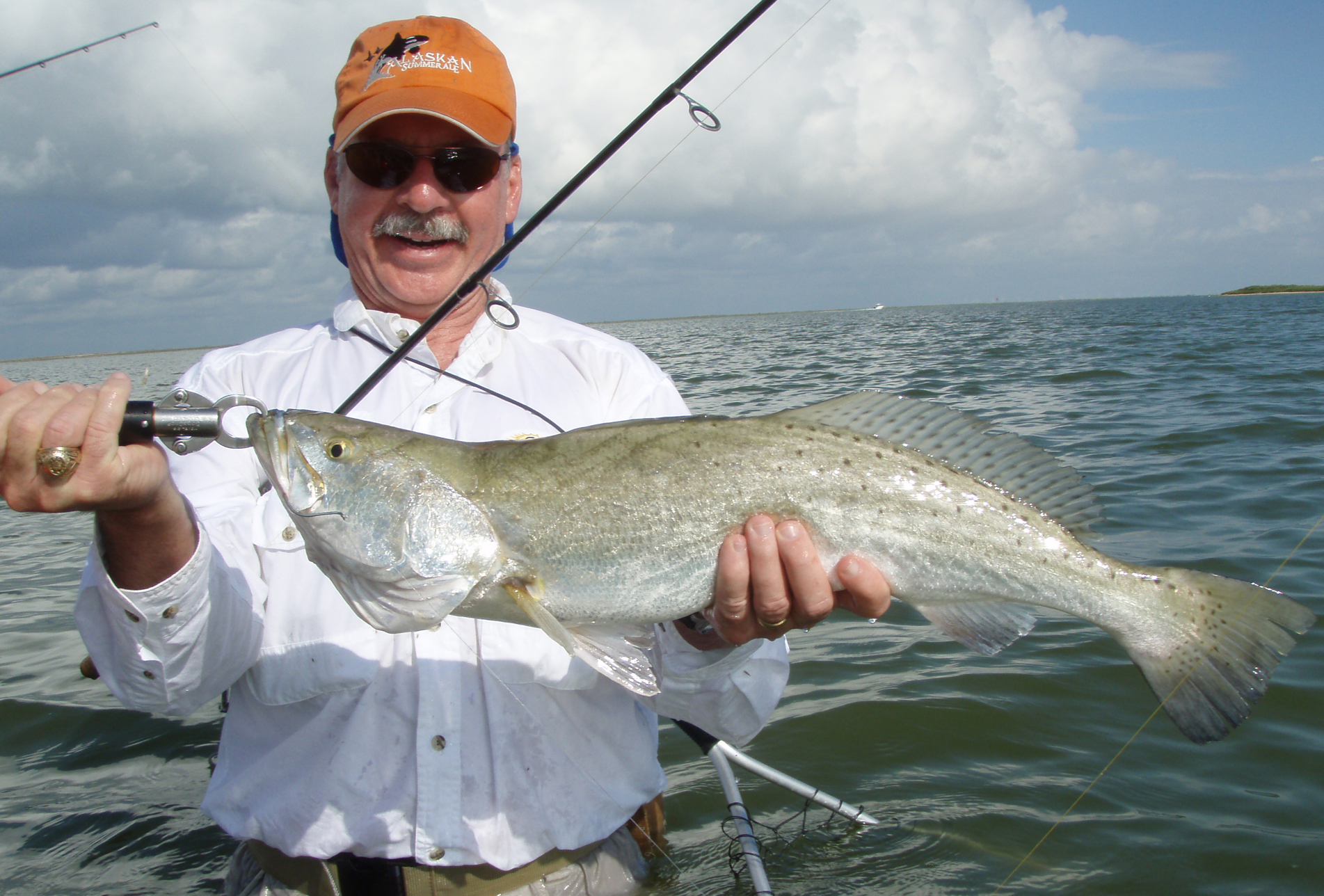
(December) Speckled Trout: Baffin Bay
This remote bay system is known in most circles as the top place in Texas to catch a truly massive specimen – a speck measuring at least 30 inches – which is the trophy standard for most gator-trout aficionados. And while the bay gets most of its guide and weekend angler pressure during the summer, the true die-hards head out to these waters in the dead of winter in hopes of catching some of the biggest sow trout around all year.
The keys to fishing this locale and other hot spots during the winter are knowing the nature of specks in cold weather and the impact it has on where they’re found and their activity levels. Trout react much more slowly in the winter, saving their energy and often looking for larger meals to maximize their efforts.
Slow down your presentation and target the depths differently than you might during early summer mornings when fish will be up super shallow looking for prey. Some of the tried and true baits that have helped lure untold numbers of big trout include the slow-sinking Corky and jigs and spoons fished vertically. Lures mimicking bait fish typically are the go-to staple for winter trout anglers.
Tip: The South Texas body of water is a world-class fishery and is the best place to target large specks, including with big topwater plugs.
Other December Fishing Options
- Community Lakes Rainbow Trout: Take a kid fishing and use ultralight tackle at these urban lakes stocked with trout.
- Braunig & Calaveras lakes Redfish: Target heated discharge areas with artificial lures including spoons and trolled deep-diving crankbaits.
Crabbing along Texas coast geared toward simplicity, fun, food
Texas fishing calendar: In October head to Gulf beaches for redfish
Texas fishing calendar: In January head to Laguna Madre for black drum
Texas jetty fishing provides some of the finest angling conditions imaginable
Texas angler recounts painful encounter after stepping on stingray
















